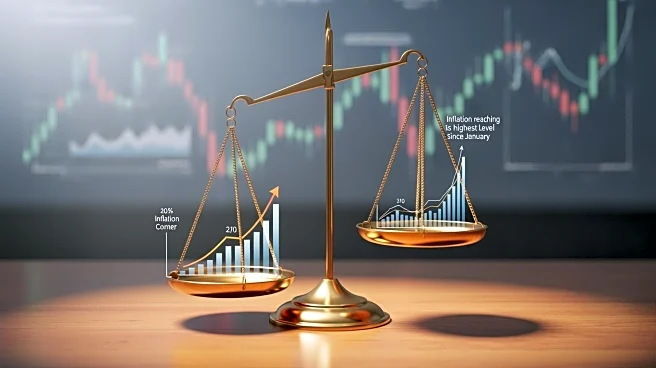What's Happening?
U.S. inflation saw a slight increase in September, with the Consumer Price Index (CPI) rising 3 percent from the previous year, marking the fastest annual pace since the start of the year. The increase is attributed
to tariffs imposed by President Trump, which have raised prices for a range of consumer goods. The report, delayed by a government shutdown, highlights the impact of tariffs on nearly all trading partners and specific sectors like cars and lumber. The effective tariff rate is now estimated at 18 percent, the highest since the 1930s. Despite the rise in inflation, the Federal Reserve is preparing to lower interest rates to support the labor market, which has been affected by reduced hiring and immigration restrictions.
Why It's Important?
The rise in inflation due to tariffs has significant implications for the U.S. economy, affecting consumer prices and the Federal Reserve's monetary policy. The increase in prices for goods like food, furniture, and apparel could strain household budgets and dampen consumer demand. The Fed's decision to lower interest rates reflects concerns about the labor market's health and the need to balance inflation control with economic growth. The ongoing government shutdown complicates the situation by delaying critical economic data, making it challenging for policymakers to assess the economy's condition accurately. The tariffs' impact on inflation underscores the broader economic consequences of trade policies and their potential to disrupt market stability.
What's Next?
The Federal Reserve is expected to continue lowering interest rates, with another cut anticipated at its December meeting. However, the prolonged government shutdown could further delay economic data releases, complicating the Fed's decision-making process. The central bank faces the challenge of managing inflation while supporting a labor market weakened by trade uncertainties and immigration restrictions. As the situation evolves, the Fed will need to carefully navigate these competing priorities to maintain economic stability.











